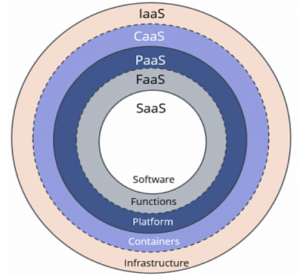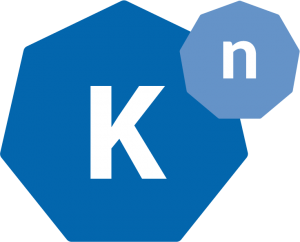Quick Hits: Coolest New Stuff In OpenShift 4
We talked in a previous post about neat stuff that was coming up in OpenShift. We wanted to follow up now that more information is available and 4.1 is GA and quickly break down some of the neatest stuff.
OpenShift 4 is the major version that will bring Kubernetes to being the standard platform: it provides features that let the majority of enterprises build and run the majority of their applications on an open, agile, future-ready platform.

Istio (Service Mesh)
What is it: Networking upgrade for OpenShift Applications
Status: Tech Preview as of 4.1

How does it work: Injects a container sidecar to monitor (mostly to say who’s calling who, and how much), secure, and manage traffic.
Key Features:
- Transaction tracing, traffic graphs, full-transaction performance monitoring
- Traffic (outing) control
- Rate limiting, circuit breaking
Big Talking Point: OpenShift Service Mesh makes managing all of the services you’re building visual and clear
Business Use Case: Enterprises looking to get visibility into their microservices, AppDynamics and Dynatrace customers.
Red Hat Code Ready
What is it: Containerized Application Development Environment. Tagline is “cloud-native development.”

Key Features:
- Single-Click Modern IDE
- Tight integration with OpenShift
- Debugging containers on OpenShift is a nice experience
Business Use Case: Enterprises with poor developer IDES will appreciate CodeReady.
Competitors: IntelliJ and VSCode
FaaS
What is it: FaaS/Serverless is an even easier, and more restricted architecture than containers or PaaS.

Serverless is an alternative to containers. Applications that would be a good fit in a simple container are an easy fit for serverless.
Knative
What is it: Kubernetes-based serverless “Application Easy Button” – just write code, forget about packaging. We talked about it in more detail here.

Key Features:
- An open standard for serverless.
- Build, scale, and trigger applications automatically
Big Talking Point: Openshift 4’s Knative solution makes building, running, scaling, and starting applications even simpler.
Business Use Case: Enterprises looking to turn their long-running (overnight) batch streams into real-time integrations should use Knative and AMQ streams on OCP
Competitors: AWS Lambda, Azure Serverless, Google Cloud Functions. K-Native provides this functionality without vendor lock-in from a single cloud provider.
The Operator Framework
What is it: intelligent automation that can manage an application by defining proper state and automate complicated application operations that using best practices.
Key Features:
- Kubernetes-native application management
- Choice of automation: Go, Ansible, Helm
- Packaged with a Kubernetes application
Business Use Case: managing stateful applications like Kafka and databases, however new use cases show up all the time, such as managing the kubernetes cluster itself (Machine Operators)
Big Talking Point: Operators make managing complex applications in Kubernetes much easier, turning industry-standard practices into automation.
KubeVirt
What is it: Kubernetes-native virtualization. Run VMs on Kubernetes. Basically, this is VMWare for K8s.
How does it work: leverage open source virtualization technology inside a container to run VMs.
![]()
Features:
- Run Windows or Linux containers on OpenShift
- Manage complicated, hard-to-containerize applications alongside the containerized applications that integrate with them
Business Use Case: ditch proprietary VM platforms and run you containers and VMs on one standard, open platform
What else is neat in OpenShift 4
Cluster Admin is so much easier:
- Fully-automated cluster spin-up: AWS install in less than an hour
- Push-button updates
- Immutable Infrastructure: RHEL CoreOS are immutable and extremely strong from a security standpoint
- Nodes as pets: automatic scaling and healing
- Cluster can automatically add nodes as load increases
Stuff We’d Like to Get Deeper With
Theres’s a lot more coming with OpenShift that we’d like to get hands-on time with:
- Windows Containers
- OpenShift Cluster Management at cloud.redhat.com
- Universal Base Image: https://www.redhat.com/en/blog/introducing-red-hat-universal-base-image
- Quay and Clair
OpenShift: Still the Best at What it Always was Best At
OpenShift is still the platform we know and love.
- Secure Kubernetes: SELinux preventing security problems like the runc vulnerability
- Fully backed by Red hat, which will be even more stable and well-funded after the IBM acquisition
- Enabling Digital Transformation: Containers are still the best way to transform IT, and Kubernetes is the best way to enable DevOps and Continuous Delivery
- Open Hybrid Strategy: Vendor Lock-in sucks. Open standards and great partnerships.
It was recently announced that more than 1000 enterprises across all industries are running OpenShift.
 So you’re a Java/C++/web developer and you’ve heard about all of these “cloud native” technologies, and containers, and you’re wondering “excuse me, what is a Kubernetes please, and why do I care?”
So you’re a Java/C++/web developer and you’ve heard about all of these “cloud native” technologies, and containers, and you’re wondering “excuse me, what is a Kubernetes please, and why do I care?”